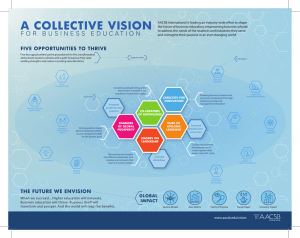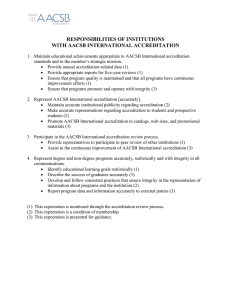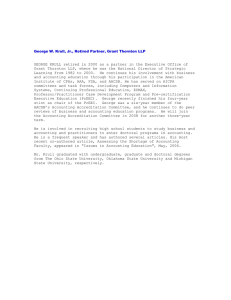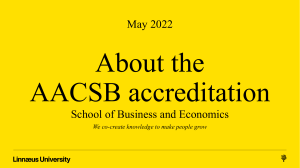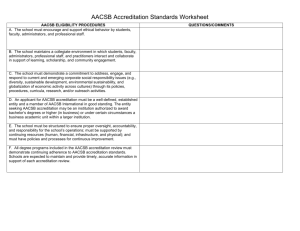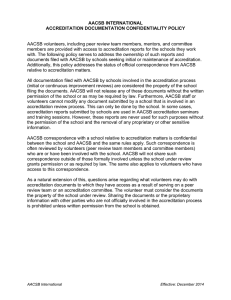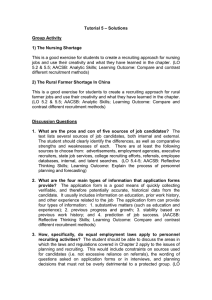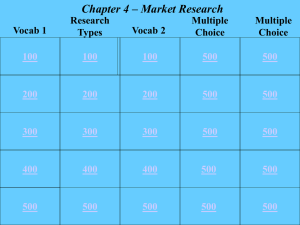Achieving AACSB International`s Initial Accreditation: The Montana
advertisement
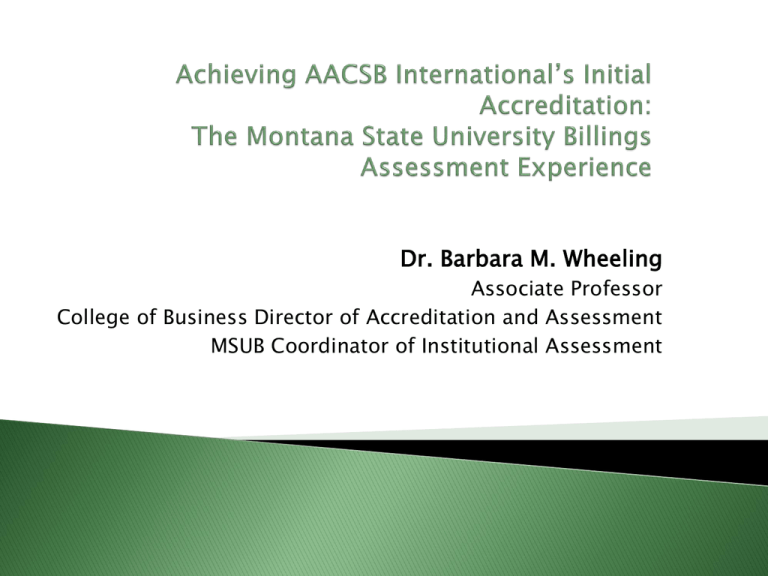
Dr. Barbara M. Wheeling Associate Professor College of Business Director of Accreditation and Assessment MSUB Coordinator of Institutional Assessment The first rule of assessment Learning goals driven by the mission Results for each program ◦ By location ◦ By delivery system Data storage Reporting process Development Implementation The Assessment Cycle Learning Goals and Learning Objectives Alignment Matrix Assessment Plan Data storage Reporting system Assessment teams ◦ Train to use rubrics ◦ Centralize and simplify assessment procedures Instructors ◦ Work with them to gather course-embedded tasks Standardized tests ◦ Plan ahead and budget early Communication on a continual basis ◦ Dean and faculty need to be able to discuss assessment as well as the coordinator ◦ Everyone is responsible for making changes to improve student learning Documentation ◦ Outline of the process ◦ Results – especially closing the loop ◦ Start writing early Centralize and Simplify ◦ Clear instructions ◦ Forms and templates ◦ Processes Conducting assessments Submitting results Polite Persistence ◦ “Friendly reminders” But– be sparing on emails Define roles and assign people ◦ Coordinator(s) Coordinate with author of Self-Evaluation Report ◦ Teams or persons responsible for conducting assessments Attend assessment seminars Read the AACSB Standards, again and again ◦ Apply what you have learned ◦ Teach what you have learned ◦ Also read SER Guidelines, White Papers and Standards updates Design formats for alignment matrix, assessment plan and reports Develop learning goals and learning objectives with faculty input Complete the alignment matrix Develop assessment plan Scheduling and assigning tasks ◦ May want to use project management software A key to successful achievement of accreditation by AACSB is demonstrating processes that ensure quality per the AACSB standards.


